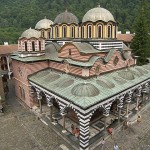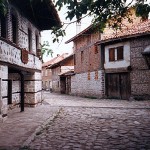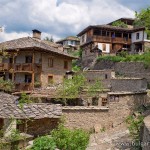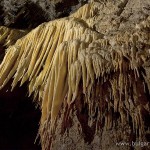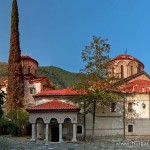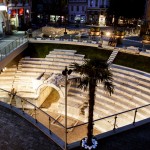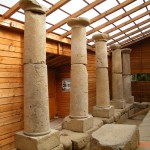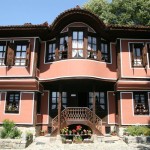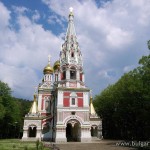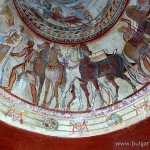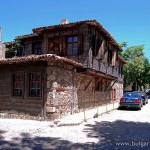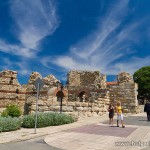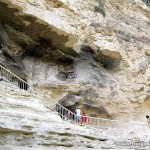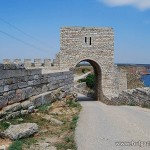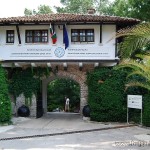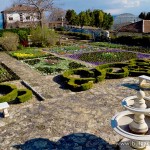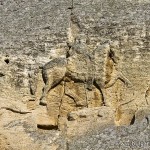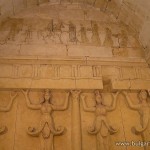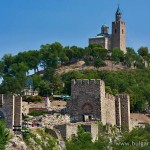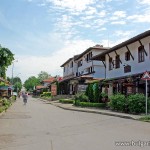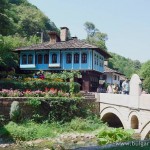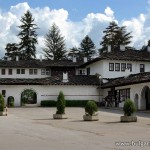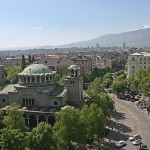Bulgaria Grand Tour
Discover all Bulgaria – from the small medieval villages, through 8 UNESCO heritage listed sites, well preserved thracian remains dating from 5th century BC, old Bulgarian capitals, fantastic nature – beautiful Black Sea coast and green mountains
Itinerary
Day-1
Arrival at Sofia airport. Transfer to the hotel in Blagoevgrad. Overnight
Day-2
Breakfast. Visit at the Rila Monastery, part of UNESCO world heritage and the biggest in Bulgaria and the second largest monastery in the Balkans. Overnight in Bansko, best known for its nice ski slope, that make it the biggest winter resort in Bulgaria and the region.
Rila Monastery was founded in the 10th century by St John of Rila, a hermit canonized by the Orthodox Church. His ascetic dwelling and tomb became a holy site and were transformed into a monastic complex, which played an important role in the spiritual and social life of medieval Bulgaria. Destroyed by fire at the beginning of the 19th century, the complex was rebuilt between 1834 and 1862. A characteristic example of the Bulgarian Renaissance (18th–19th centuries), the monument symbolizes the awareness of a Slavic cultural identity during the centuries of Otoman occupation.
Bansko gradually established itself as one of the leading winter ski resorts in the country and the region, that attracts many Bulgarian and foreign tourists. There are multiple museums and
landmarks in the town. 130 architectural and historical monuments of the culture are registered, seven of which are of national significance. The architecture of the typical houses in Bansko from the period of Revival (18th – 19th century) can be seen in the rest of the museum complex on the territory of the town.
Day-3
Breakfast. Visit of Kovatchevitsa and Leshten – some old style mountain villages, know for their architecture and old houses, Dospat – the little town in the Rodopi mountains situated near the biggest dam in Bulgaria, Yagodina cave – one of the prettiest caves in Bulgaria. Overnight in Devin – situated in the heart of the Rodopi mountains and well known for its mineral springs.
The village of Kovachevita is an appropriate destination for the admirers of country tourism and relaxation. Besides having the option to walk along the narrow cobblestone streets, and stay in a typical Kovachevitsa house, tourists can taste some traditional Bulgarian dishes and enjoy the tranquility of the Rhodope mountain. 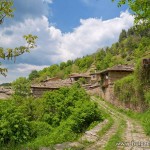
The village of Leshten attracts tourists with its authentic look of the old houses, preserved since the Bulgarian Revival (18th – 19th century).
The Yagodina Cave is located in the Buynovo Gorge near the
Rhodoope village of Yagodina. It is one of the most famous and most-visited caves in Bulgaria. Its galleries extend to a length of 8,501 meters, which makes it the 4th longest cave in Bulgaria and the longest in the Rhodopes. The Yagodina Cave is a multi-level complex, primarily marble.
Day-4
Breakfast. Visit of Plovdiv. Located on the river Maritsa, this city is best known for its Old Town and the ancient theater. Bachkovo monastery – located in the mountains and the second largest in Bulgaria, Asenova Krepost – which is named after the great Bulgarian Tzar Asen , and dating from the early thracian times,, half-day tour of Plovdiv. Overnight in Plovdiv.
Bachkovo Monastery – the second largest monastery in Bulgaria, which dates from the middle ages.
The monastery was founded in the year 1083 by the Georgian Gregoriy Bakuriani, who donated the land. For a long time the monastery was Georgian.
Plovidv is considered as one of the oldest cities in Europe. Here you will see remains for the Thraci fortress (5th century BC) and well preserved remains from Roman times to our days.
The Old Town is a marvelous site, with picturesque churches, the mosque and many houses with architecture, specific atmosphere and the spirit of Bulgarian Revival period.
Your guide will show you the fabulous remains from Ancient Roman Empire – Roman Stadium, Roman Forum, Amphitheater.
Day-5
Breakfast. Visiting Starosel, Koprivshtitsa which is the town with one of the main roles in the National Revival, village Shipka. Overnight in Kazanlak – the town of the famous Bulgarian Rose.
The Thracian Temple Complex at Starosel covers six underhill temples, four of which are unique, as well as a few royal burials. The entire hill is surrounded by a wall made of processed granite blocks. Its length is 241 meters and its height reaches 3.5 meters. The wall is called krepis and outlines a circle which according to the Thracian religious believes symbolizes the Sun. The entrance of the temple has a parade staircase and two pedestals, on which statues of lions were sitting.
Koprivshtitsa is announced for National Town-Museum. The architecture
in Koprivshtitsa reflects the historical development growth of Bulgarian traditional architecture that can still be observed in its various forms at present.
The Shipka Monastery “The Nativity” is located on the outskirts of the city Shipka.
The idea to found the monastery began with the Russian diplomat Count Ignatiev and Olga Skobeleva, mother of General Skobelev. The monastery was Russian Orthodox until 1934, when the Soviet government transferred ownership to Bulgaria. Today the Shipka Monastery is part of the Shipka-Buzludzha park and museum complex.
Day-6
Breakfast. Visiting Kazanlak tomb, part of UNESCO world heritage and Thracian Kings Valley which are best known for their excavations of treasures. Wine tasting in Sliven region. Transfer to Sozopol. This town is one of the oldest in Bulgaria and situated on the beautiful Black Sea Coast. Overnight.
The Kazanlak Tomb, UNESCO world heritage site is based on its architectural outlook, it belongs to the dome tombs, typical for the Thracian funeral architecture from the end of the 5th and the beginning of the 3rd century BC.
The Valley of the Kings is full of remains. There you will see different tomb of different kings ruled the Thraci territories during the ages
Day-7
Breakfast. Full day tour Sozopol, Burgas – one of the largest cities in Bulgaria, Nesebar best know of its Old town, part of UNESCO world heritage and ancient excavations. Overnight.
Sozopol’s Old Town was declared a museum-reserve. The reserve includes more than 180 residences, constructed from the middle of the 18th century to the beginning of the 19th century. Houses in the Old Town are built of stone and wood and conform to the so-called Black Sea school of architecture. In 2010, during archeological excavations of the nearby Saint Ivan (Saint John’s) Island, researchers unearthed holy relics of Saint John the Baptist. Today these invaluable relics are in the care of authorities at The St. Cyril and St. Methodius Church and attract pilgrims from all over the world. Old Sozopol and the relics of Saint John the Baptist were voted the most important of “Bulgaria’s Wonders” in 2011.
Nesebar is one of the most ancient towns in Europe, founded 3200 years ago. During Antiquity the town was called Mesembria, in the Middle Ages it was known as Mesemvria, and it was later renamed to Nesebar. Numerous archaeological finds provide evidence of the centuries-old history of Old Nesebar. Ever since it was founded, the town has always been surrounded by fortification walls, some remains of which have survived to this day.
Day-8
Breakfast. Full day tour Aladzha Monastery – The rock monastery, Kaliakra cape where dolphins can
be seen, Balchik, Golden Sands – one of the largest Black sea resorts, Varna which is the capital of the Black sea coast. Overnight in Varna.
Aladzha Monastery is one of the few cave monasteries in Bulgaria where the different premises and their functions are clearly distinguishable. The monastery premises are carved and arranged on two levels in a limestone rock that is almost 40 m high. There are no reliable historical records as to when the monastery was established, but there is evidence that it already existed in the 10th – 12th centuries.
Cape Kaliakra and the architectural reserve on its territory are located 12 km southeast of Kavarna. It is an oblong, narrowing rocky peninsula that juts out about 2 km into the sea. The rich history, the well-preserved landscape, and the beautiful panoramic views make Cape Kaliakra one of the most attractive tourist spots on the Black Sea Coast.
The Palace in Balchik is the former summer residence of the Romanian
Queen Maria Alexandrina Victoria de Edinburg (1875 – 1938). It is situated approximately 2 km south-west of Balchik in a beautiful locality between the Balchik rocks and the sea. The Palace is a designated archeological and constructional monument of culture and a monument of the gardening and landscape art. Just next to the terraces is formed beautiful waterfall, high 25meters. Another smaller waterfall lours from “Allah’s garden” through thick wall to three-flow fountain into deep stone pool.
The University Botanical Garden in Balchik was established in 1955 by Acad. Prof. Daki Jordanov on the territory of the park of the former summer residence of Queen Marie of Romania. Today the Botanical Garden spreads over an area of 190,000 m² and accommodates collections with over 3500 plant species.
Zlatni Pyasatsi (Golden Sands) is one of the oldest and largest Black Sea resorts in Bulgaria. It is situated at a distance of 17 km north from Varna city, in close proximity to the breezy forests of the natural park “Golden Sands”.
The name of the resort comes from the wonderful golden sand. According to a local legend, pirates buried a golden treasure here, and in order to avenge them nature turned it into fine golden sand. The beach line here is 3.5 km long, and in some places its width reaches 100 meters.
Varna was established in the 6th century BC under the name of Odessos by emigrants from the town of Milet in Asia Minor. For a short time it turned into a polis and one of the most important ports and commercial centers on the Black Sea. Because of its history and its economical and cultural significance, it is often called the Sea Capital of Bulgaria.
Day-9
Breakfast. Visiting Madara Rider which is located on a rock and is part of UNESCO world heritage, Sveshtari – one of the oldest tombs in Bulgaria, part of UNESCO world heritage, Ivanovo Monastery – part of the UNESCO world heritage. Overnight in Veliko Tarnovo.
Madara Rider – The most notable monument at the Madara reserve is the unique stone relief known as the Madara Rider. The relief depicts a horseman in a natural pose with a sword in his hand. At the feet of the horse is a lion, and behind the rider is depicted his hunting dog. One legend has it that a Roman emperor was hunting on the plateau when he fell off the cliff and died. His relatives memorialized him by engaging a master to carve his image on the cliff.
Thracian Royal Tomb in Sveshtari was constructed in the first quarter of the 3rd century BC and represents a unique monument of the Thracian tomb architecture. It has significant size. Its length is 7.5 m, its width at the façade is 6.5 m, and the height of the tomb chamber (on the inside) is 4.45 m. The tomb was constructed by large limestone blocks. It consists of a dromos (corridor) and three premises-chambers, as each chamber is covered by an individual arch.
Day-10
Breakfast. Full day tour Veliko Tarnovo – the Town of the Tsars and Arbanasi. Wine tasting in Lyaskovets. Overnight in Veliko Tarnovo.
Veliko Tarnovo is one of the oldest towns in the country, as its history dates back to more than five thousand years ago, which is proven by archaeological excavations.
The upsurge of Veliko Tarnovo is related to the period of the Second Bulgarian Empire (1185 – 1393). In 1185 the town was declared a capital of the restored Bulgarian State by the brothers Asen and Petar, who declared the end of the Byzantine dominion, which continued for 167 years.
After its selection to be a capital, the town developed fast, as within the period 12th – 14th century it was the most unconquerable Bulgarian fortress, as well as a cultural and intellectual center of Bulgaria.
The village of Arbanasi is located on a high plateau 4 km from the city of Veliko Tarnovo.
It is known that the village existed during the time of the Second Bulgarian State (1185 – 1393). At that time the Bolyari living in the capital Tarnovo used it as a summer residence. According to legend, the Tsar of Tarnovo minted coins here.
Day-11
Breakfast. Tour to Etar – the ethnographic museum, Cherni Osam, Troyan Monastery. Transfer to Sofia. Overnight.
The Architectural And Ethnographic Complex Etar is situated on the outskirts of the town of Gabrovo. It is an open air museum. The Architectural and Ethnographic Complex Etar was established in 1964 and was declared an architectural and ethnographic monument of national significance. The museum contains a total of 50 sites – houses with craft workshops, water installations and other buildings. The only collection in Bulgaria of technical installations driven by water – filling mills, water mills, grindstones, etc., are situated there. 16 houses can be seen on the crafts bazaar (the central commercial street) in the Etar, which are exact copies of buildings existing in the past in Gabrovo and the region. On the crafts street the visitors can watch in real time the work of the craftsmen. Multiple crafts are presented – bell-making (manufacturing of wrought bells for animals), pottery-making, sugar-making (manufacturing of sugar articles), furriery, manufacturing of copper vessels, etc.
Troyan Monastery as a monastery complex is the third in size in Bulgaria, a remarkable monument of culture of national significance. According to the historical documents, the monastery was first founded in 1600 and reconstructed in the period 1830 – 1865 in its present look. As an architectural style of the buildings it is associated with the School of Revival.
Day-12
Breakfast. Full day tour of Sofia with the center, Boyana church which is part of the UNESCO World
Heritage, National historical museum, Pancharevo lake. Overnight
Day-13
Breakfast. Transfer to the airport
Additional Days
You may add more days to your tour at special price for accommodation to explore Sofia by yourself or to join Zelanos one-day tours.
Prices: Upon request
-
Person in DBL / TRPL
-
Person in SNGL
-
Child 2 – 11.99 y.o.
-
Infant 0 – 1.99 y.o. – FREE
Included in the prices:
-
12 BB in quality 3* centrally located hotels
-
Wine tasting in Sliven region and in Lyaskovets
-
Arrival, departure transfer
-
Seat in luxury mini-van or mini-bus
-
English speaking guide
-
English speaking chauffeur
-
All entrances in the sites visited during the tour
Supplements – optional:
-
Lunch
-
Dinner
-
Accommodation in 4* and 5* hotels supplement per person
Additional nights in Sofia, per person, per night:
-
Hotels 3*
-
Hotels 4* / 5*
Notes:
Please, send request for rates
Optional excursions:
-
Wine tasting in Brestovitsa or Pomorie
-
Tour by boat in Ropotamo Reserve
-
Folklore Dinner in Plovdiv
-
Folklore Dinner in Sofia
-
Boyana church and National Historical Museum

